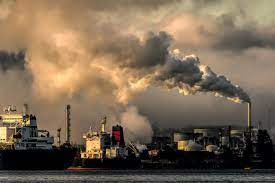Putative plastic degrading communities within New Zealand’s geothermal environments
- Get link
- X
- Other Apps
🔬 Introduction
Plastic pollution is a major global problem. Microorganisms capable of degrading plastics are a promising natural solution, but they are not yet fully understood, especially in extreme environments.
🌋 Why Geothermal Environments?
New Zealand’s geothermal areas — like hot springs and steam vents — host unique extremophile microbial communities. These microbes often have special metabolic abilities, including breaking down tough compounds under harsh conditions.
🧫 Putative Plastic Degraders
Putative means “assumed” or “believed to be.” So this refers to microbes that are suspected, based on genetic or metabolic clues, to be capable of degrading plastics like polyethylene, polystyrene, or PET.
In geothermal sites, DNA sequencing and culture-based studies may reveal novel bacteria or fungi with enzymes (like PETase or hydrolases) that can attack plastic polymers.
Research Significance
-
Identifying such microbes could lead to new enzymes for biotechnological applications.
-
These microbes may function at high temperatures, making them useful for industrial plastic waste treatment.
-
Studying them expands knowledge of biodegradation under extreme conditions.
Key Takeaway
New Zealand’s geothermal sites could be reservoirs of undiscovered plastic-degrading microbes. Investigating these putative communities may help develop eco-friendly ways to break down persistent plastic waste.
🌍 Background
Plastics like polyethylene (PE), polypropylene (PP), polystyrene (PS), and polyethylene terephthalate (PET) persist for decades or centuries in the environment because they resist natural degradation. Most known plastic-degrading microbes come from soil, compost, or marine environments.
However, extreme environments — like geothermal hot springs — are underexplored for biodegradation. Geothermal areas often host thermophilic (heat-loving) and acidophilic (acid-loving) microbes with unique enzymes.
🧫 Key Microbial Groups
In geothermal sites, the main putative plastic degraders may include:
-
Thermus, Geobacillus, Meiothermus, Anoxybacillus — known for heat-tolerant enzymes.
-
May produce esterases, lipases, and cutinases that attack polyester bonds.
Actinobacteria
-
Streptomyces and related genera, common in soil but also found in thermal vents, produce powerful hydrolases.
-
Some thermotolerant fungi (Aspergillus, Penicillium) can produce oxidative enzymes (laccases, peroxidases) that help break down polymers.
Archaea
-
Less explored but extremophile archaea sometimes have unique metabolic pathways that might help degrade plastic-like compounds under high temperatures.
🧬 Mechanisms of Degradation
Microbes degrade plastics in two main steps:
Surface Oxidation
-
Enzymes introduce oxygen into the plastic’s polymer chain, creating weak points.
-
For example: laccases, peroxidases, monooxygenases.
Depolymerization and Assimilation
-
Hydrolases (cutinases, esterases, PETases) break down oxidized polymers into smaller oligomers and monomers.
-
Microbes then use these as carbon and energy sources.
🔍 Evidence So Far
-
DNA Metagenomics: Studies of New Zealand’s hot springs (e.g., Rotorua, Taupo Volcanic Zone) have detected genes related to plastic-degrading enzymes (e.g., cutinase-like or PETase-like genes).
-
Culture Studies: Some thermophilic bacteria isolated from geothermal soils can degrade hydrocarbons and synthetic polymers in lab conditions.
-
Lab Simulations: Experiments incubating plastic films in geothermal soil or water have shown weight loss, surface pitting, or chemical changes, suggesting microbial action.
🧪 Research Methods
To study these communities, researchers often use:
-
Sampling: Collect soil, water, and biofilms from geothermal sites.
-
Enrichment Cultures: Grow samples with plastic as the sole carbon source.
-
Metagenomics: Sequence DNA to identify genes linked to degradation.
-
Enzyme Assays: Test for activity of specific hydrolases or oxidases.
-
Microscopy & Spectroscopy: Check physical changes in plastic films.
🔬 Potential Applications
✅ Industrial Plastic Waste Treatment
Thermostable enzymes from these microbes could break down plastics at high temperatures, speeding up recycling processes.
✅ Bioremediation
Engineered consortia of extremophiles could clean up plastic waste in harsh environments where typical microbes fail.
✅ Synthetic Biology
Genes from geothermal microbes could be cloned into industrial bacteria or fungi to enhance biodegradation.
📌 Key Example
A hypothetical example:
A thermophilic Geobacillus strain isolated from Rotorua hot spring might produce a novel PETase-like enzyme that breaks down PET bottles more efficiently at 60–70°C — ideal for faster industrial processing.
🗂️ Current Research Gaps
🔹 Very few geothermal sites have been systematically sampled for this purpose.
🔹 Many putative degraders are only predicted by DNA evidence — actual enzyme function needs lab confirmation.
🔹 Scale-up and practical application of enzymes still face challenges (enzyme stability, yield, cost).
Summary
New Zealand’s geothermal environments are an untapped source of novel microbes and enzymes that could help solve plastic pollution sustainably — especially in conditions where normal microbes cannot survive.
- Get link
- X
- Other Apps





Comments
Post a Comment